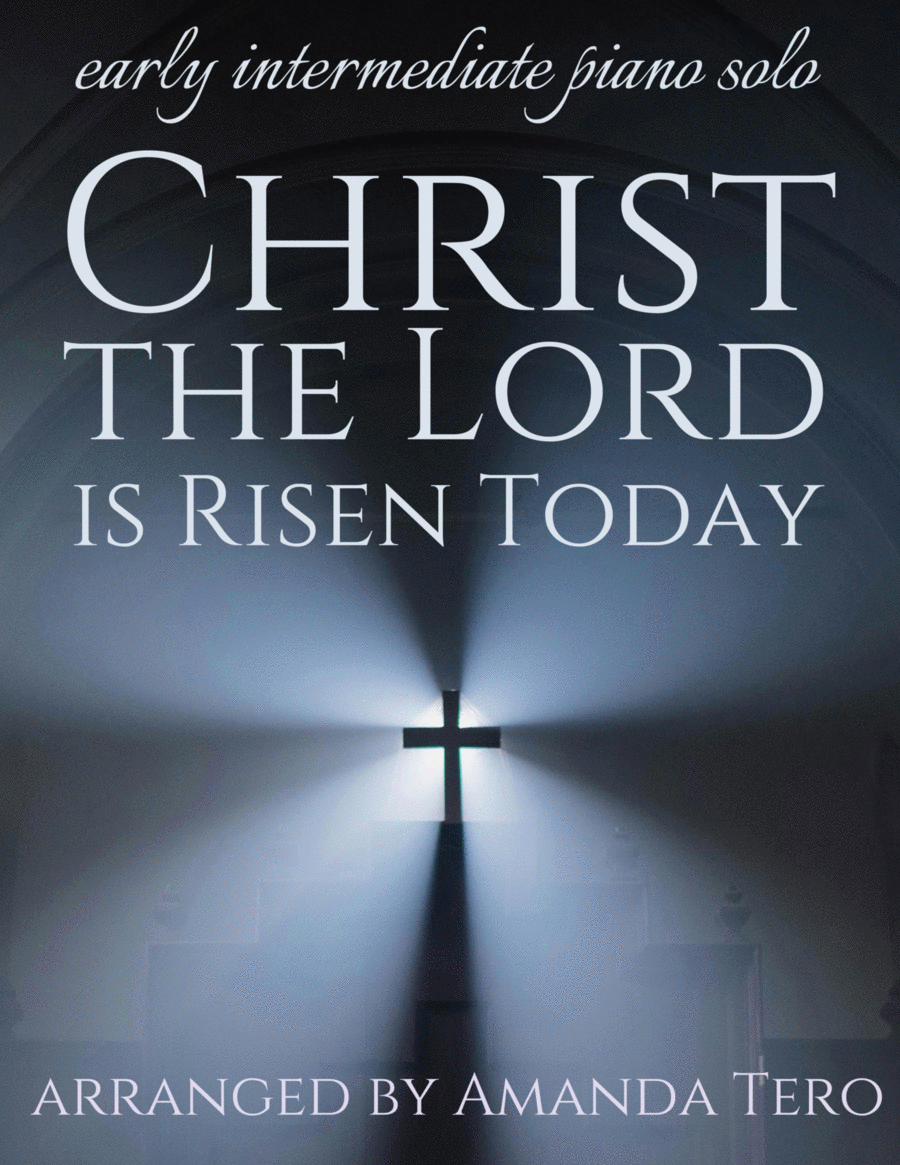Piano Solo - Level 2 - Digital Download SKU: A0.1416906 Composed by Lyra Davidica. Arranged by Amanda Tero. Christian,Easter,Holiday,Religious,Sacred. Score. 9 pages. Amanda Tero #998498. Published by Amanda Tero (A0.1416906). Mark any Sunday, including Easter, with this lively Christ the Lord is Risen Today piano solo for early intermediate players. It features an energetic left hand, some syncopation, and a brisk tempo, making it a crowd-pleaser.This piano solo of Christ the Lord is Risen Today is designed for students who want pieces with easy patterns that sound great. The left hand features mostly open 5ths with a few other intervals or single notes woven in tastefully. The right hand carries the melody as single notes, with a few 3rds and 5ths.It is arranged in an exciting, driving style that some may categorize as rock.For church services, recitals, and Easter music events, Christ the Lord is Risen Today early intermediate piano sheet music solo will capture the listeners and cause them to celebrate.Similar in level to most Level 2-3 piano curricula and ABRSM Level 2-3.The basic format of Christ the Lord is Risen Today early intermediate piano solo is: introduction, verse, interlude, verse, interlude, verse, ending. Features 3 complete verses.5 pages. Key of C major.Approx. 2:00 performance time. Musical Elements In Christ the Lord is Risen Today Early Intermediate Piano Solo Sheet Music Key of C major Time signature: 4/4 with a few 2/4 measures Tempo: exciting, fast Note values: half notes, dotted quarter notes, quarter notes, eighth notes Note reading: right hand treble clef G3 to D6, left hand bass clef C2 to C4 Hand crossings Ledger lines (up to 2 lines) Ties for syncopation Left hand predominantly open 5ths Right hand predominantly single-note melody (4 measures of 3rds) Accidentals Glissando Staccatos Practice Tips for Christ the Lord is Risen Today Early Intermediate Piano Solo Sheet Music The temptation may be to take this piece too quickly, but remind the student to play it at a tempo they can keep up with.Ā The rests and staccatos are very important in this arrangement. Be sure the student has complete silence and doesnāt hold notes over the rests and has a nice, sharp staccato.If the student struggles with the syncopation in measures 35-38, I have found it beneficial to draw straight lines between the staves to show where the RH and LH interplay.
